Pinarello has officially unveiled the Bolide F HR 3D, the bike which Filippo Ganna will use for his upcoming attempt at the UCI Hour Record.
In a move Pinarello claims is a “world-first”, the Bolide F HR 3D uses a 3D-printed construction across much of the bike.
Pinarello says this enabled it “to introduce new shapes and features that are impossible to replicate” using existing carbon fibre construction techniques.
These features include custom geometry and sizing, and novel humpback whale-inspired aerodynamic shapes, as well as less obvious benefits such as internal reinforcement and reduced development time.
The world’s first 3D-printed UCI-compliant aero bike
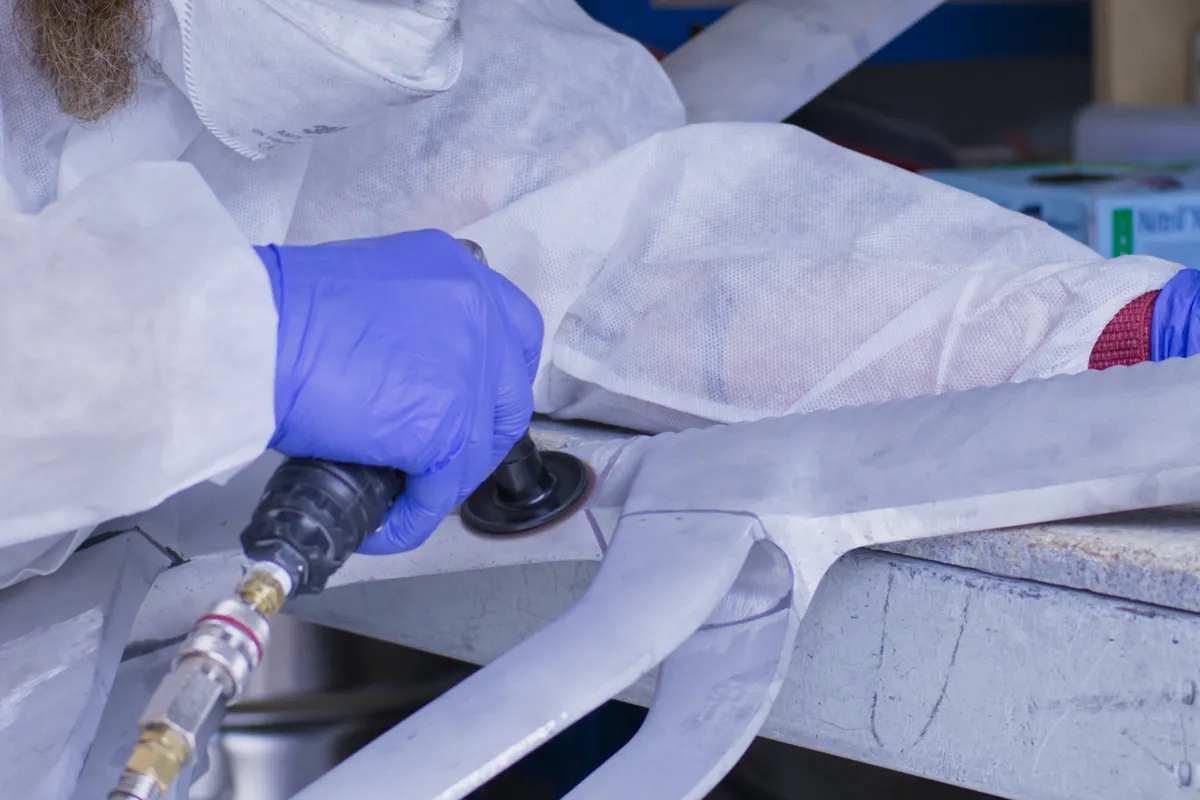
The Pinarello Bolide F HR 3D is made in partnership with UK-based 3D-printing specialists Metron Advanced Equipment.
As with the Metron’s recently launched Mythos Elix 3D printed stem, the Pinarello Bolide F HR 3D frameset and seatpost are built from Scalmalloy.
This alloy of scandium, aluminium and magnesium is, according to Pinarello, “an aerospace material specifically designed for 3D-printing”.
The frame was produced in five separate parts, and then bonded together using epoxy resin.
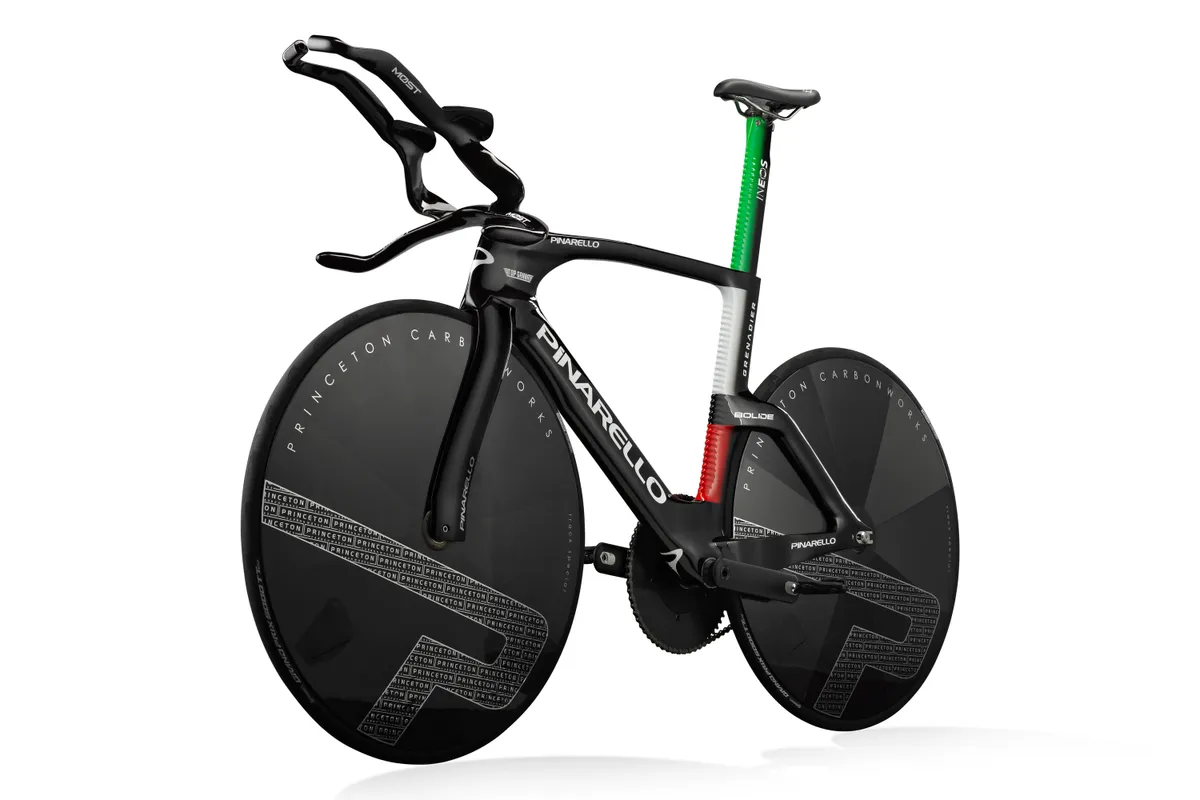
The bike is built around 3D-printed titanium narrow bullhorn-style handlebars and the same kinked aero extensions as seen on Ganna’s Bolide F time trial bike.
The "fork head" is also constructed using 3D-printed titanium. It is unclear if the fork head refers to the fork crown or the steerer.
A copy of Ganna’s frameset was sent to EFBE, a leading mechanical bicycle test lab in Germany, for independent testing to ISO4210 standards (ISO4210 covers safety standards for bicycles, and includes a range of fatigue, impact and torsion tests).
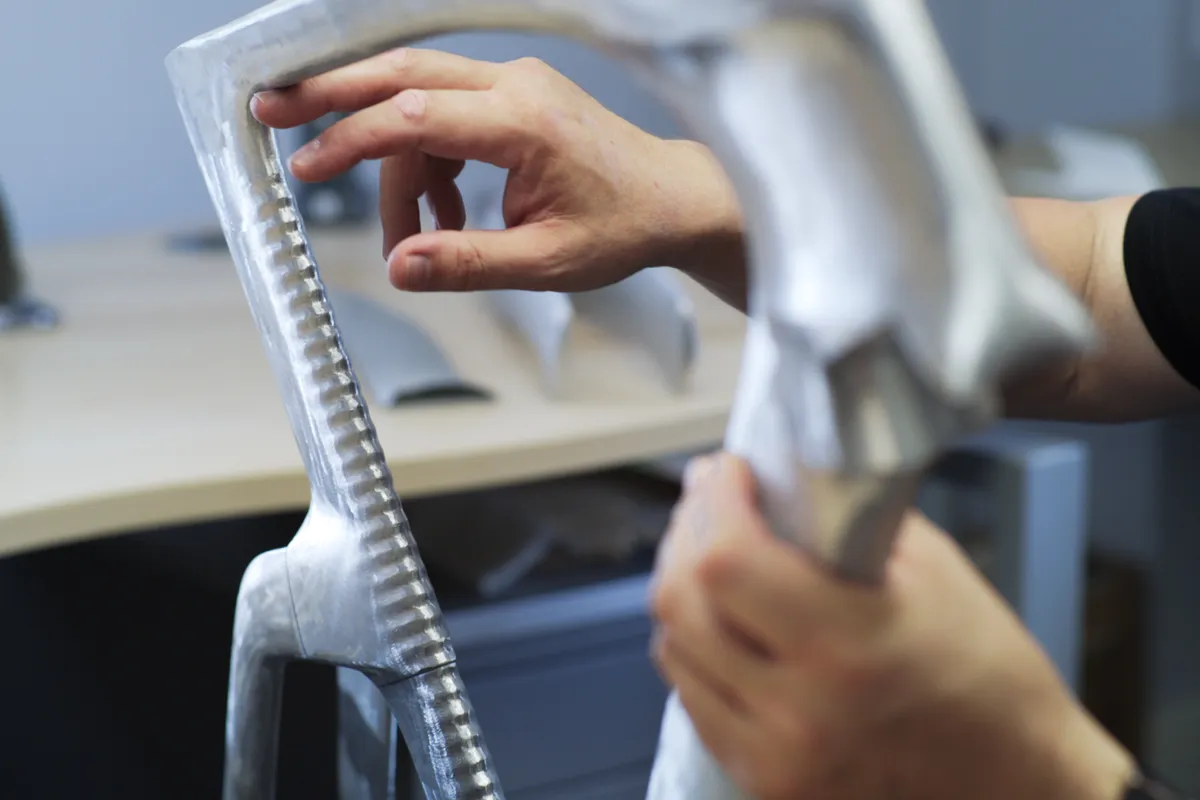
According to Pinarello, the Bolide F HR 3D is the first 3D-printed, UCI-compliant aerodynamic bike to pass these tests.
In accordance with UCI rules, the Pinarello Bolide F HR 3D will be available to consumers via official retailers, although due to the custom, 3D-printed construction, it will only be built on demand and no pricing is given.
Given the aforementioned Mythos Elix stem costs £500, however, it’s probably fair to assume the Pinarello Bolide F HR 3D won’t be cheap.

What can humpback whales teach us about aerodynamics?
The most visually striking aspect of the Bolide F HR 3D is arguably the bumpy seat tube and seatpost.
According to Pinarello, this feature is designed to mimic the tubercles seen on the fins of humpback whales.
Pinarello cites research by the University of Adelaide, which applied this concept to a bicycle frame in a patent application filed in 2016. Zipp also uses a similar idea for its Sawtooth rim profile.
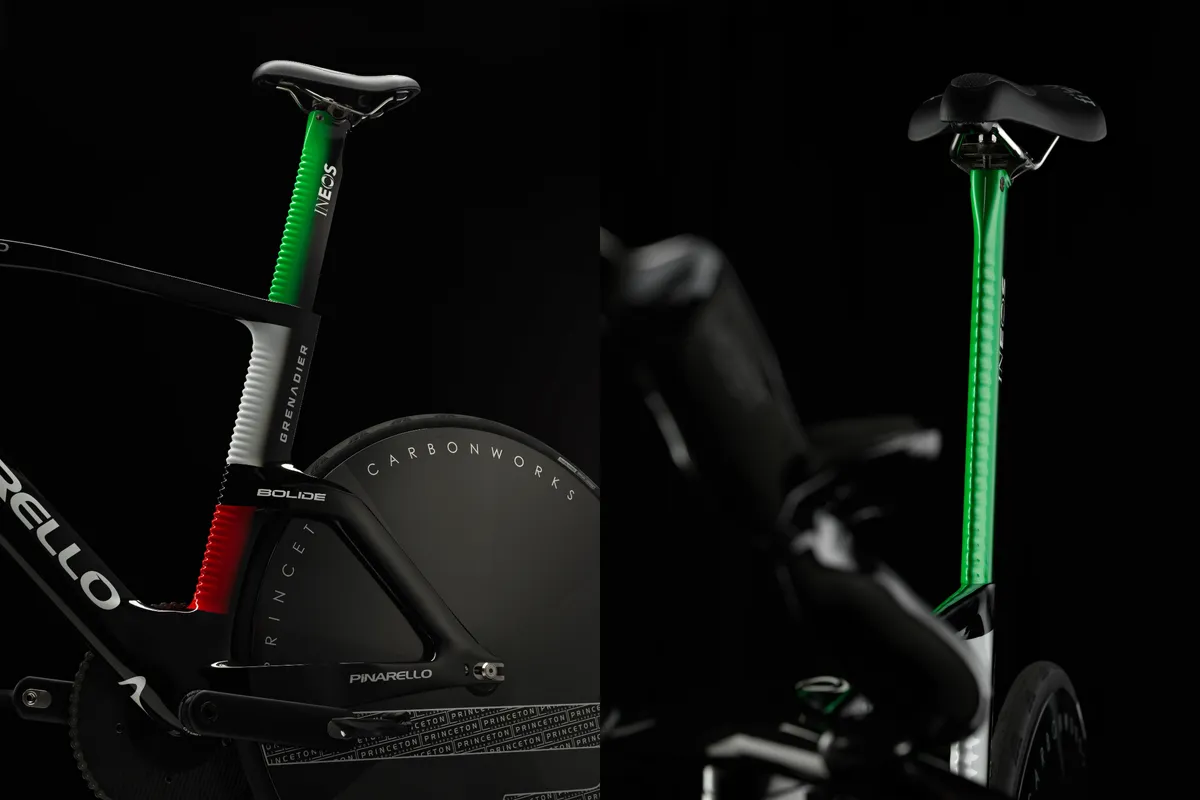
Pinarello says the seat tube and seatpost account for 39 per cent of the overall drag on a bicycle, and that it’s an especially hard area to manage airflow in, due to the turbulence generated by the rider’s moving legs.
Adding ridges to the leading edge of these structures can, when sized correctly, “minimise this separation effect and reduce the drag”, according to Pinarello.
This drag reduction is achieved by “generating streamwise vortices in the troughs between the bumps, causing the flow behind the peaks to stay attached”.
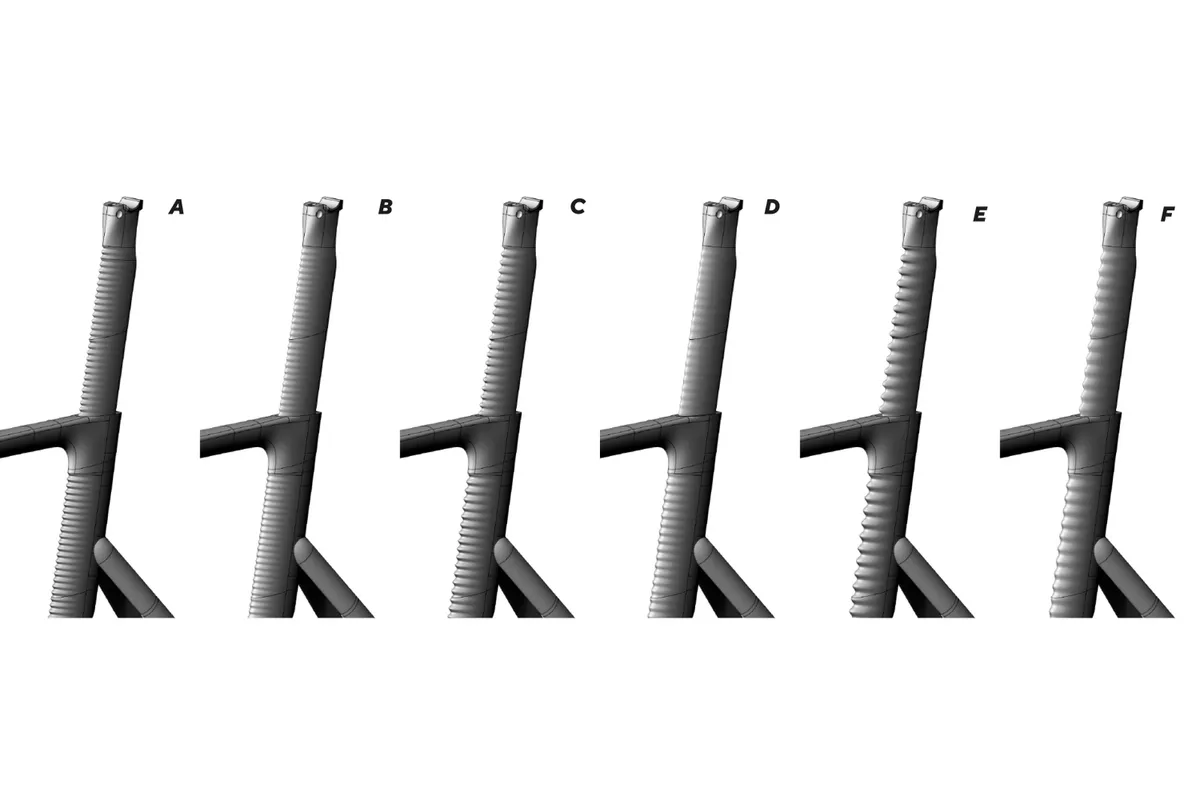
Goodbye 3:1 rule
Beyond the bumpy tubes, Pinarello says it has also found aerodynamic gains in more traditional ways, via elongating the tube profiles beyond the constraints of the UCI’s recently removed 3:1 rule (which dictated frame tubes and forks could be no more than three times longer than their width).
Pinarello has not given exact ratios for the individual tubes on the Bolide F HR 3D but says “it is very well known that airfoil sections that have an aspect ratio of 6:1 or even 8:1 do perform significantly better than the old 3:1 ratio.”
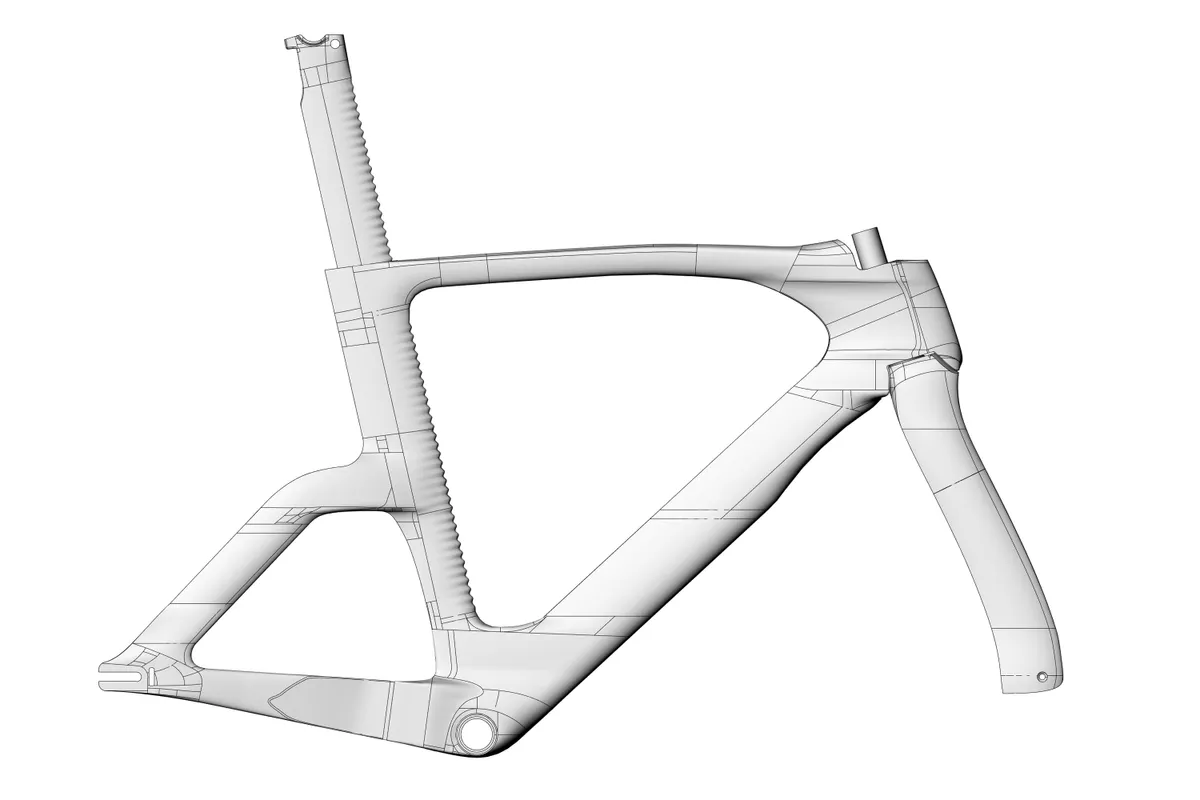
The wheel hubs and bottom bracket have also been narrowed significantly, for further aerodynamic gains compared to the Bolide HR used by Bradley Wiggins for his Hour Record in 2015.
The front and rear hubs are 69mm and 89mm wide, respectively, down from 100mm and 120mm.
The bottom bracket, meanwhile, is now just 54mm wide, down from 70mm.
Pinarello says no, grazie, to wide forks
Notably, Pinarello has decided to stick with a more traditional, narrow fork and seat stays design.
It notes that wide stance designs, such as that seen on the Hope HB.T, can improve performance if it reduces the overall system drag (rider plus bike) by enough to outweigh the penalty incurred by the design.
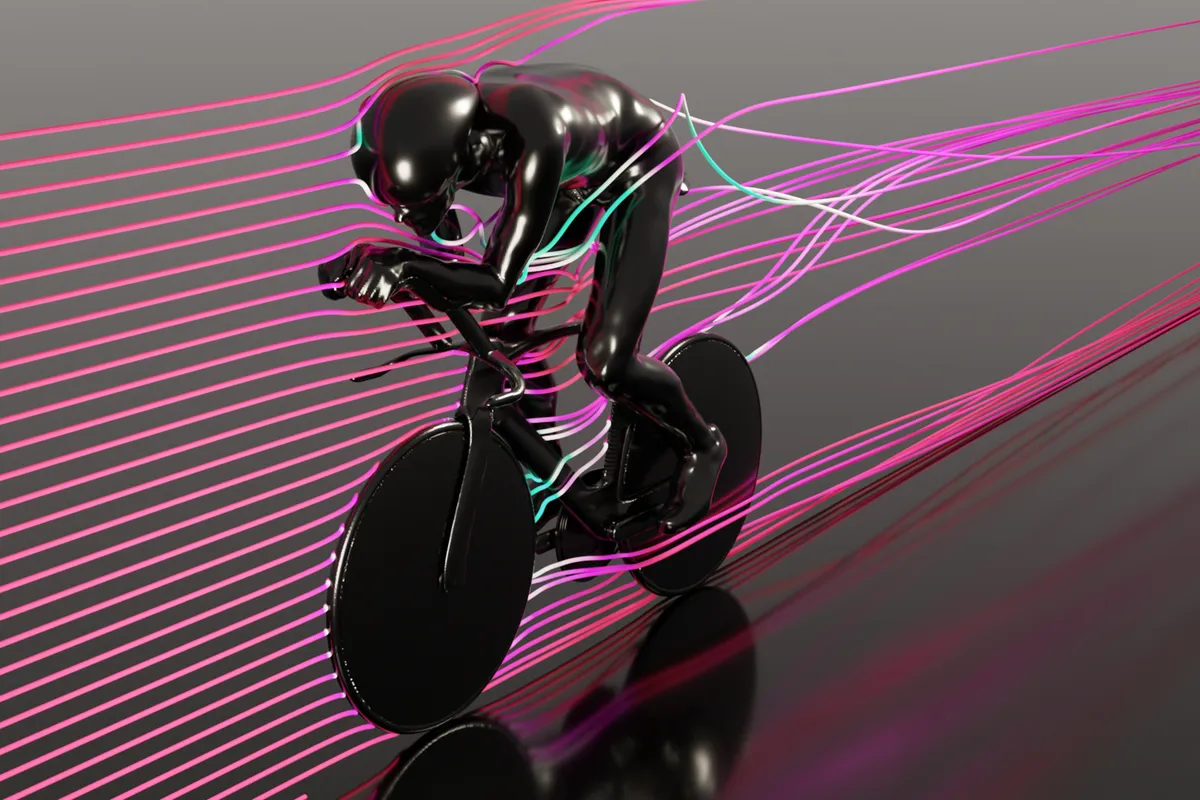
Pinarello said its testing showed the results of such designs were “too unstable”, however, and that the “potential gains were not consistent enough to adopt such a design.”
Interestingly, though, this concept is adopted in Ganna’s previously mentioned 3D-printed aero extensions.
Pinarello notes that the kinked design increases drag in isolation, but leads to a net reduction in aerodynamic drag with a rider present.

All of these design features have, Pinarello says, been validated by CFD, wind tunnel and real-world testing.
As we now know, the final test for the Bolide F HR 3D was Dan Bigham’s successful Hour Record attempt earlier this year, in which he rode an unbranded prototype version of the bike.
Following Bigham’s lead, Ganna looks set to use custom Princeton CarbonWorks disc wheels, shod with tubeless Continental GP5000 TT tyres, a WattShop Cratus Aero Crank and carbon fibre track chainring, and a Muc-Off optimised track chain.
Filippo Ganna’s Pinarello Bolide F HR 3D specifications
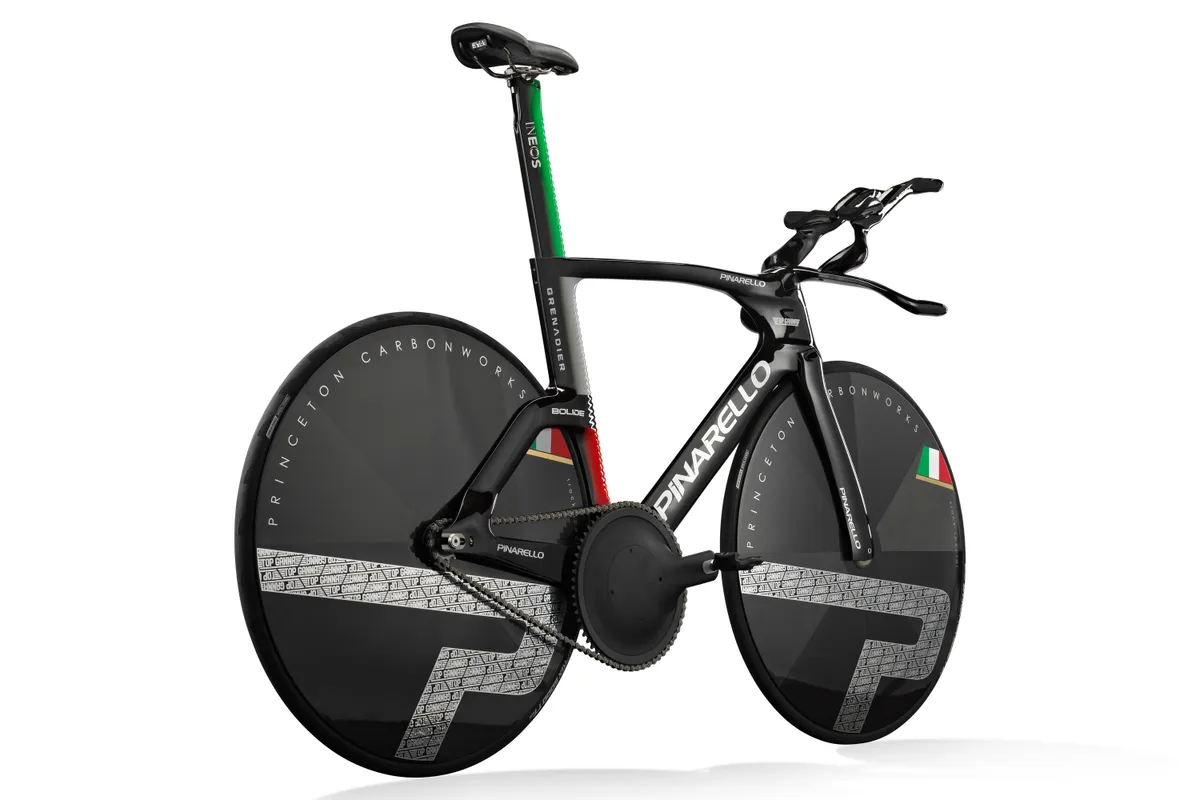
- Frameset: Pinarello Bolide F HR 3D, 3D-printed Scalmalloy
- Handlebars: Pinarello, 3D printed titanium
- Wheels: Princeton CarbonWorks Track Special
- Tyres: Continental GP5000 TT
- Crankset: WattShop Cratus Aero Crank with WattShop Cratus carbon fibre chainring
- Chain: Muc-Off optimised Izumi Kai 1⁄2” track chain
- Saddle: Fizik Ares TT
